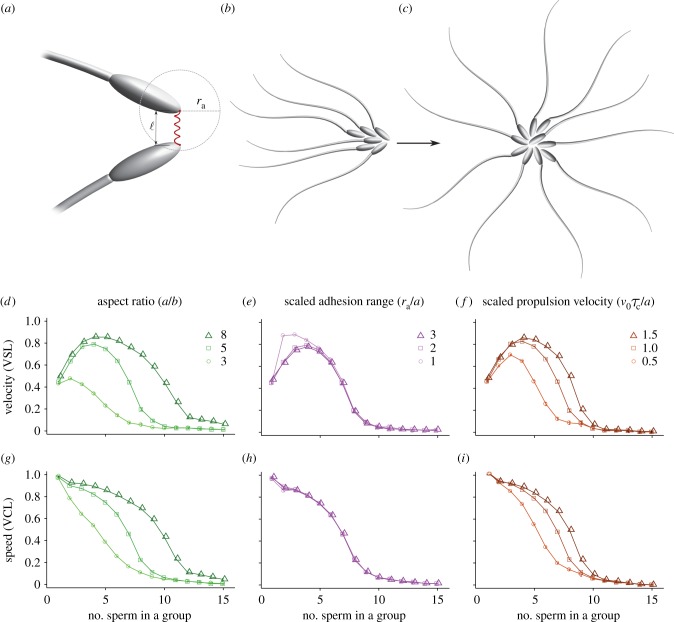Figure 3.
(a) Schematic of the adhesive interactions modelled in equation (2.2). Sperm heads are treated as self-propelled elliptical particles whose major and minor semiaxes have length a and b, respectively. Each particle is equipped with a given numbers of keys and locks, representing the adhesion complexes where the sperm can bind. When the key of a particle is within a certain distance ra from the lock of another particle, a link represented by a linear spring is formed. The geometry of the aggregates affects their motility, so asymmetric aggregates (b) move fast and maintain a straight trajectory, whereas star-shaped aggregates (c) move slowly, because the velocities of the individual cells in the aggregate cancel each other. Average velocity (d–f) and speed (g–i) versus aggregate size obtained from a numerical integration of equations (2.1)–(2.5) for various aspect ratios a/b (d,g), scaled adhesion range ra/a (e,h), expressed in units of the particle major semiaxis length a, and the scaled propulsion velocity v0τc/a (with τc = 1/D the timescale associated with the rotational noise) (f,i). (Online version in colour.)

